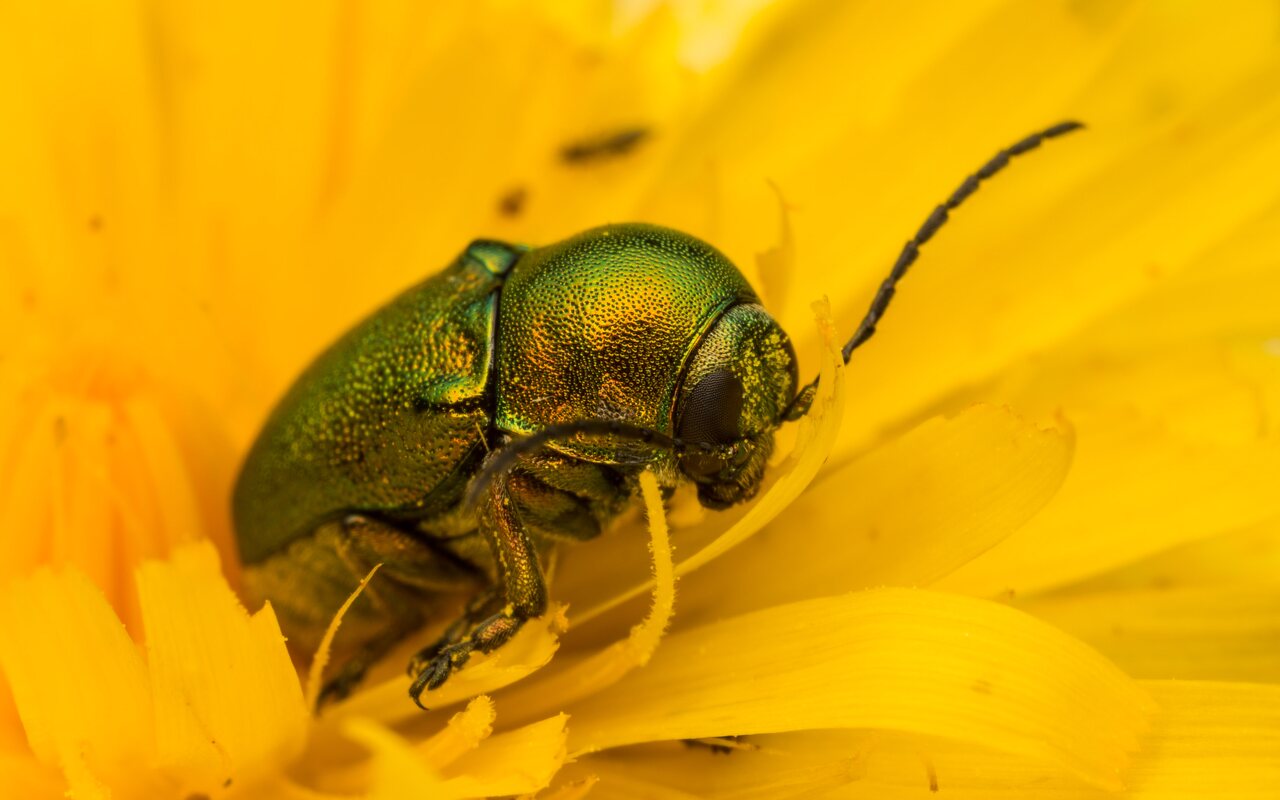
Cryptocephalus sericeus · žaliasis paslėptagalvis
- Chrysomela sericea
- Seidige Fallkäfer, Grünblaue Fallkäfer
- žaliasis paslėptagalvis
- zaļais slēpgalvis
- zmróżka złotawa
en.wikipedia.org/wiki/Cryptocephalus_sericeus This species can be found in most of Europe, in the eastern Palearctic realm from Siberia east to northwestern China, and in the Near East. It is not present in the British Isles. These beetles inhabit lawns and meadows, especially with yellow flowers of Apiaceae species.
Cryptocephalus sericeus can reach a length of about 6–7 millimetres. The body of these little beetles is squat, cylindrical and almost oval. Elytra are irregularly punctured, not arranged in longitudinal rows. They do not completely cover the last part of the abdomen. Pronotum and elytra are golden green in males, while females show a metallic bronze color, with green-blue, orange or yellow reflections. The antennas are thread-shaped and relatively long. The head, the legs, and antennae are dark colored.
Adults can be found from April to July. The feed on pollen, especially on the yellow flowers of Apiaceae species. Larvae feed on leaves of the host plants. They live in a housing that consists of their own droppings. The pupation takes place in the soil.
Kūnas 6 - 8 mm. Auksiškai žalias, mėlynas arba vario raudonumo, metalo blizgesio. Kūno apačia, kojos ir antenos juodos. Aptinkama birželio – liepos mėnesiais pievose ir miškų pakraščiuose ant įvairių žiedų, dažniausiai ant kiaulpienių ir vanagių.
‥
0 comments
Add a comment